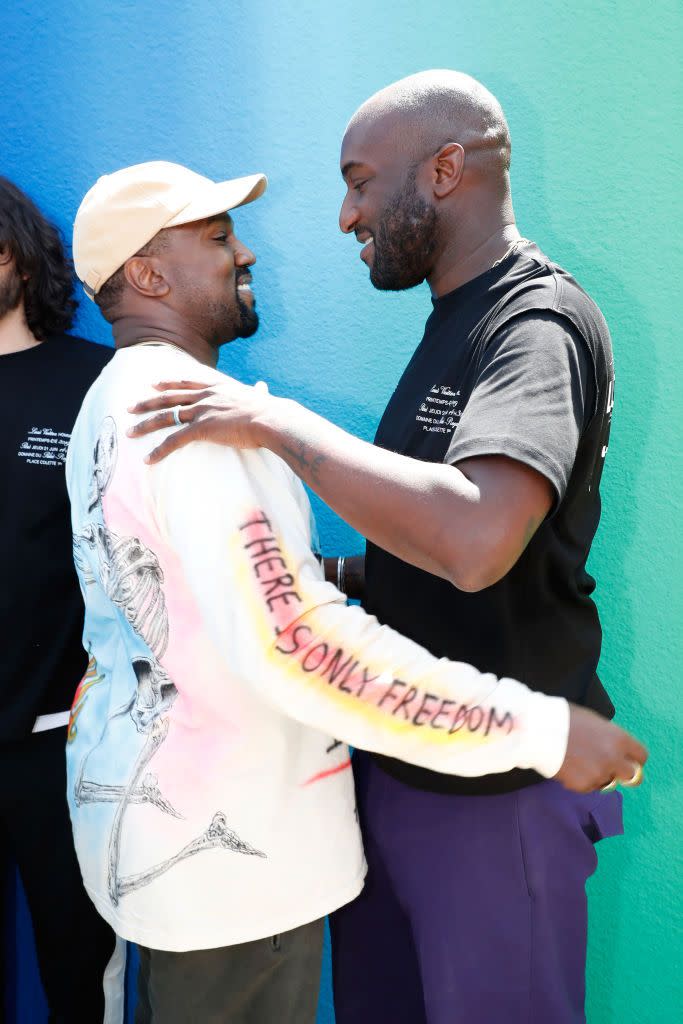Remembering Virgil Abloh

Virgil Abloh was one of the fashion industry’s lodestars and a popular culture revolutionary. His unorthodox career – from architecture student, to DJ, to gonzo fashion designer, to agenda setter, tastemaker and collaborator-in-chief, to glass-ceiling breaker and era-defining icon – is well-documented, and even more so since the news broke yesterday. Therefore, we thought we’d reflect on one of the many highlights of an effervescent, tragically short career.
It was the baking hot June of 2018, and Abloh’s debut collection for Louis Vuitton would precede that of Kim Jones at Dior. To much fanfare, Abloh had been appointed artistic director of menswear the previous year (the first African American to hold the position), shortly after Jones had vacated the role to take up at Dior. And it not only meant that two of the fashion world’s most storied, imperious houses would be unveiling new creative direction at the same time, but that they would, in a way, be competing for attention. As if he needed more pressure, Abloh’s high-luxury debut would inevitably be judged not just on its merit, but in comparison to that of Jones, too, and vice versa.
A rainbow runway had been erected in the gardens of the Palais Royal in Paris, and attendees arrived early. A mistake perhaps, given how incredibly hot it was, but the sun only added to the anticipation. Overly put together fashion types struggled to maintain their cool under the beating sun, whereas the 700 students that stood behind chattered and giggled and felt no desire to mask their excitement. Their presence was the first nod to an inclusivity that Abloh would come to put at the centre of his work.
At their seats, guests found a printed alphabet of luxury according to Abloh. The word was “a label determined by values, codes and qualities, its use and definition were the privilege of few until a new generation conquered its dominion and shifted the paradigm for good.” Abloh did not go to fashion school, nor did he spend time in the bowels of some atelier honing a craft and biding his time. Up until this point, his career had been built on the subversion of ‘big fashion’, so it was fortifying to see that he intended to bring luxury to where he was, rather than go to it.
Broadly, Abloh’s work could be characterised as heavily graphic; laden with copy and facets and logos and cultural references, so it came as a surprise when his first ten or so looks for Louis Vuitton (a brand with one of society’s most indelible logos) were all-white-everything. A boldly minimal start to a show that seemingly promised such bombast. But the monochrome eventually gave way to beige and then blissed out acid green and then neon and technicolour, and the textural punctuations we now associate with Abloh’s LV began to coalesce. The harness bags, the oversized chains, the bellows pockets, the high-top trainers… the high end gardening gloves. Abloh’s take on luxury was gradually emerging.

The stuff happening around the clothes would eventually prove to be characteristically Abloh’vian, too. First there was live music, led by Benji B, who would go on to become LV’s director of music. Rather than the requisite thud of house music big fashion shows tend to offer, we could hear real snare drums and bass lines and wailing guitars. The models – including Playboi Carti, Kid Cudi, Dev Hynes and Theophilus London – were not just Abloh’s friends, but members of the new, creative elite. And when the show was over, he made a beeline to friend and long-time collaborator Kanye West. The pair embraced in a tearful moment of vindication. In just a few short years, and against the odds, Abloh had claimed a seat fashion’s top table.
“I don’t call myself a designer, nor do I call myself an image-maker,” said Abloh in the show notes. “I don’t reject the label of either. I am not trying to put myself on a pedestal, nor am I trying to be more, now. I would like to define the title of artistic director for a new and different era.”
You Might Also Like


